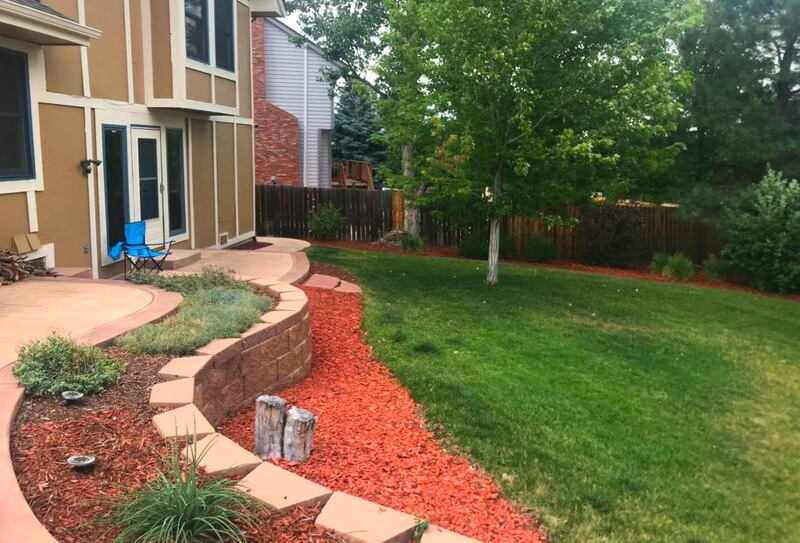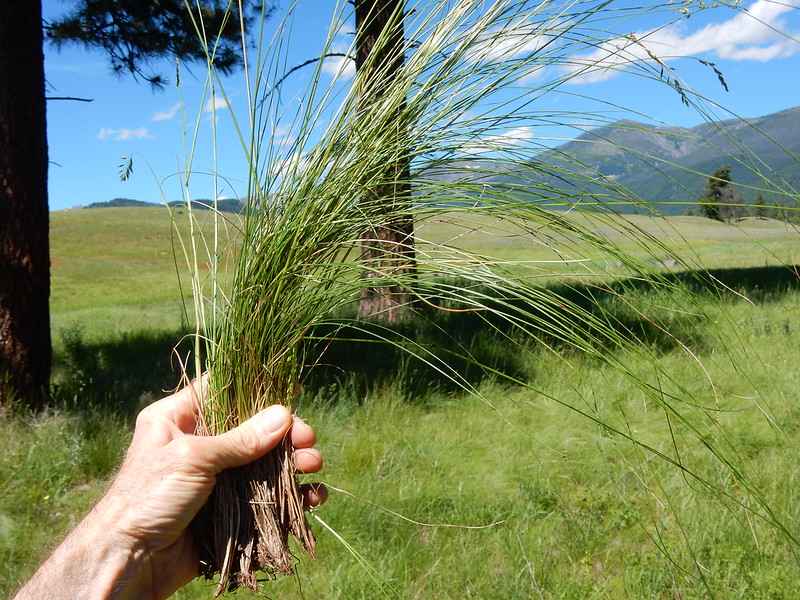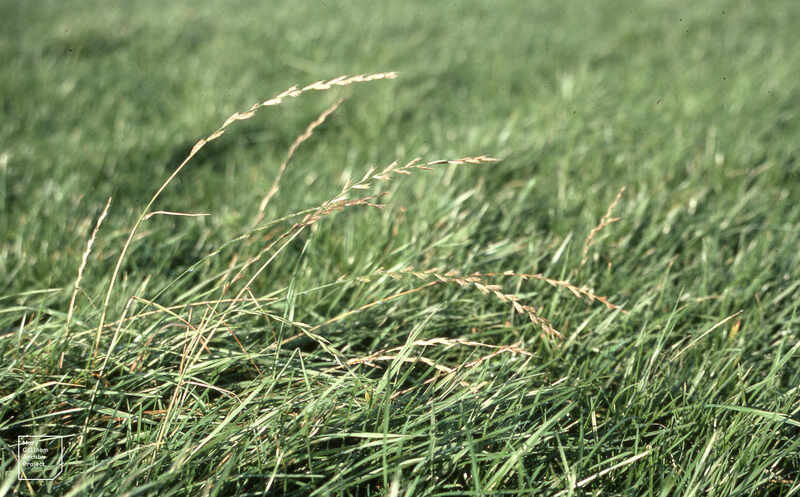4 Best Grass Types for Milwaukee
BY LASHONDA TUCKER | JULY 29TH, 2022 | LAWN CARE, MILWAUKEE, WISCONSINAfter walking across the grass at Lake Park or enjoying the Oak Leaf Trail, you may want to take some of that natural green beauty home with you. We’ve made it easy for you to invite Milwaukee’s organic greenery into your personal space. We highlight the 4 best grass types for Milwaukee’s multiple months of shady skies, cool temperatures, and freezing winters.
- Warm-Season vs. Cool-Season Grasses
- 4 Cool-Season Grasses for Milwaukee
- FAQ About Milwaukee Grass Types
- Choose Plant and Grass Varieties for Your Milwaukee Landscape
Warm-Season vs. Cool-Season Grasses
Whether you’re starting a new lawn or improving an existing one, you have two categories of grass to choose from: warm-season and cool-season. Cool-season grasses are the best selection for the Milwaukee area.
Warm-season grasses green up and grow when the weather is warm, which is between late spring and early summer. Cool-season grasses green up sooner in spring than warm-season grasses and retain their green color longer in Milwaukee. Cool-season grasses thrive best when air temperatures are between 60 and 75 degrees. Warm-season grasses go brown and dormant in the winter, while cool-season grasses go dormant later in the winter than warm-season grasses.
4 Cool-Season Grasses for Milwaukee
Cool-season grasses were built for the Milwaukee climate, where temperatures are usually between 18 and 81 degrees Fahrenheit. The grass survives Milwaukee’s below 40-degree winter cold. Since cool-season grass goes dormant when the weather is consistently below 45 degrees Fahrenheit, it may retain its colors through part of the Milwaukee winter.
Here are the four best types of cool-season grass for your Milwaukee home:
1. Kentucky Bluegrass

Photo Credit: Brenda Ryan / Wikilawn
Kentucky bluegrass is the most commonly used grass in Wisconsin lawns. It’s great for lawns with dead spots because it expands and develops new grass to cover up unsightly bald patches. Although it goes brown faster than most other grass varieties during a drought, Kentucky bluegrass can stay alive for up to 60 days in this condition.
Kentucky bluegrass has a strong dark green color and lives for the moist, cool weather of Milwaukee. It requires a lot of maintenance, but it helps prevent erosion. If you don’t mind the high fertilizer needs, and enjoy the exercise from mowing, Kentucky bluegrass will work well for your home.
The long months of cloudy Milwaukee skies are probably more than enough shade for this grass, as it has moderate shade tolerance. This variety grows best on properties that get a lot of sun. With its moderate foot traffic tolerance and soft texture, Kentucky bluegrass is a good option for outdoor events.
Kentucky bluegrass is more tolerant of the snow mold that is sometimes found on Wisconsin lawns than tall fescue and perennial ryegrass, but not as resistant as fine fescue.
Classification: Cool-season grass
Spreads by: Rhizomes
Shade tolerance: Low
Drought tolerance: Moderate
Foot traffic tolerance: Moderate
Maintenance needs: Moderate mowing frequency and high fertilization needs.
Mowing height: Set mowing height between 2.5 and 3.5 inches.
Potential for disease: Moderate to high; prone to several diseases, such as dollar spot, leaf spot, necrotic ring spot, summer patch, and stripe smut.
Soil pH: 6-7.5
Soil type: Performs best in well-drained, heavy soils with high fertility.
Other notes: Used in most pastures in the northeastern part of the country because it tolerates heavy grazing. Varieties developed for lawn use need more watering, dethatching, and fertilization than varieties used for animal feeding.
2. Fine Fescue

Photo Credit: Matt Lavin / Flickr / CC BY-SA 2.0
Fine fescue is a great choice to stand up against the Milwaukee snow. Fine fescue is more resistant to snow mold than Kentucky bluegrass, tall fescue, and perennial ryegrass. For the most tolerant variety, use hard fescue. Sheep fescue and red fescue are moderately tolerant, while chewings fescue will leave your lawn vulnerable to the gray and pink snow mold that have historically damaged Milwaukee lawns.
Since it’s the most shade-tolerant cool-season grass, it will grow better on properties with a lot of trees or buildings blocking the sunlight than most other cool-season grasses.
Fine fescue is often found blended with other grasses and is a good choice for lawns with areas that need reseeding. But your yard may appear a little multicolored, as fine fescue can have a green color lighter than other grasses, and even has a blueish-greenish look.
Fine fescue has a soft texture, but low to moderate traffic tolerance. It’s not the best grass for regular badminton games even though it provides a soft cushion for falls. The tradeoff is that it’s low maintenance. If you need a lawn that looks well-kept and manicured without a lot of work, and you don’t have a lot of activity in your yard, fine fescue grass is well-suited for your Milwaukee home.
Classification: Cool-season grass
Spreads by: Creeping red fescue spreads by rhizomes, while other fine fescues are bunch-type grasses, such as chewing, hard, and sheep fescues.
Shade tolerance: Moderate to High, depending on species
Drought tolerance: Moderate to High, depending on species
Foot traffic tolerance: Low to Moderate, depending on species
Maintenance needs: Low fertilizer and mowing needs.
Mowing height: Set mowing height between 2.5 and 4.0 inches, depending on species.
Potential for disease: Moderate. Common diseases include red thread, leaf spot, dollar spot, summer patch, and powdery mildew.
Soil pH: 6-6.5
Soil type: Will not perform well in wet soil conditions. Prefers drier soils and tolerates a wide range of soil types and fertility.
Other notes: Fine fescue is prone to thatch. It may require dethatching every few years. Chewings is the most shade-tolerant fine fescue species but the most susceptible to snow mold.
3. Perennial Ryegrass

Photo Credit: Dr Mary Gillham Archive Project / Flickr / CC BY 2.0
Homeowners love to mix this grass because it germinates quickly and produces a full, green canvas. This quick growth is ideal for the short Milwaukee summers.
Perennial ryegrass has a low tolerance to heat, cold, and drought, but works well with other grasses that are adapted to the cold, like Kentucky bluegrass. It’s recommended that perennial ryegrass is combined with other grasses and not used predominantly.
Although perennial ryegrass prefers soil with good drainage, it tolerates some poor drainage, making it a good choice for the Milwaukee area. Milwaukee soil ranges from being poorly drained to well-drained.
Perennial ryegrass has moderate maintenance needs. It requires less mowing than tall fescue and is more tolerant to traffic than any of the other three types of grass. It’s perfect for homeowners who love to throw weekly lawn parties or host outdoor play dates regularly. This is the grass for back-to-back hide-and-seek games. It doesn’t tolerate the shade well, so if your yard is usually a host to the sun’s rays, perennial ryegrass is a good selection.
Classification: Cool-season grass
Spreads by: Has a bunch-type growth habit
Shade tolerance: Low
Drought tolerance: Low
Foot traffic tolerance: High
Maintenance needs: Moderate mowing and fertilization requirements. Thatch is not significant.
Mowing height: Set mowing height to 1.5 to 2.5 inches
Potential for disease: High. Common diseases include gray leaf spot, red thread, and leaf spot/melting-out.
Soil pH: Can grow in soils with a pH between 5 and 8, but prefers between 6 and 7.
Soil type: Prefers good drainage and fertility, but can tolerate some poor drainage.
Other notes: Mix with Kentucky bluegrass for a more disease-resistant and traffic-resistant lawn.
4. Tall Fescue
The wide leaves of tall fescue grass may lead many to mistake it for weeds. It’s cold and shade-tolerant, and the most heat tolerant of all the cool-season grasses. It grows slower than perennial ryegrass, so if you’re looking to establish a lawn more quickly, a blend of perennial ryegrass and one of the other grasses would be better.
When other grasses are losing their color in winter, tall fescue remains green for longer. This makes it an ideal choice for Milwaukans that like a little green peaking out beneath frosted grass and snow. It’s also a good choice if you need a reason to work in the yard regularly, as it requires frequent mowing.
With its coarse texture, moderate foot traffic tolerance, and tendency to slowly recover from damage, tall fescue is not the best choice for yards full of children playing.
Classification: Cool-season grass
Spreads by: Produces short rhizomes but has a bunch-type growth habit
Shade tolerance: Moderate
Drought tolerance: Moderate to High
Foot traffic tolerance: Moderate
Maintenance needs: Frequent mowing. Does not produce significant thatch.
Mowing height: Set mowing height to 2 inches when the grass reaches 3 inches tall.
Potential for disease: Tolerant of most diseases when properly maintained.
Soil pH: 5.5-6.5
Soil type: Adapted to a wide range of soil conditions, but prefers fertile clay soils with good drainage.
Other notes: Remains green during the winter, depending on the variety. Grows slower than perennial ryegrass.
FAQ About Milwaukee Grass Types
The best time to plant grass seed is between mid-August to mid-September. The warm soil and cooler air temperatures during this time of year help with seed growth. This gives the seed several months to germinate before the cold winter temperatures.
Cool-season grasses go dormant when the soil temperature stays below 45 degrees Fahrenheit consistently. They also go dormant during the summer if it is dry too long or gets too hot. Watering the grass in the summer helps prevent it from going into dormancy and, fortunately, Milwaukee doesn’t get extremely hot.
Fine fescue grasses are low-maintenance. This drought-resistant grass has less mowing, fertilization, and watering needs than other cool-season grasses.
Choose Plant and Grass Varieties for Your Milwaukee Landscape
Each type of grass has its own tolerances and conditions for the best growth. Look for a grass type that fits your yard’s properties and your lifestyle. If your lawn has a lot of trees or buildings casting a lot of shade, you’ll want grass that tolerates the shade, such as fine fescue. If you’re prone to experiencing snow mold on your lawn, which can be severely damaging, choose a fine fescue variety like hard fescue.
Your soil type, foot traffic, and how much time you want to spend taking care of your lawn all factor into the decision of which type of grass to select. If you’re the house in the neighborhood where children are routinely playing a game of tag, perennial ryegrass is your best choice.
Pick a grass type that allows you to enjoy the theaters and art galleries in the Historic Third Ward for as long as you desire. That may mean picking a low-maintenance grass and staying away from one that requires frequent mowing and high fertilization, like Kentucky bluegrass.
Call a Milwaukee lawn care professional to get help maintaining a green and thriving lawn.
Main Photo Credit: Hilda and Gustav Pabst House / Lightburst / Wikimedia Commons / CC BY-SA 4.0